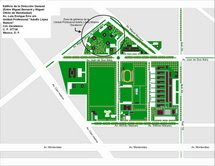 The Alberta Government’s commitment to energy research is more important today than ever before. Alberta’s conventional oil and gas supplies are declining, and relying solely on current methods of production is not an option.
The Alberta Government’s commitment to energy research is more important today than ever before. Alberta’s conventional oil and gas supplies are declining, and relying solely on current methods of production is not an option.Research is needed to develop ways to recover the significant amount of conventional oil left behind, as well as less energy intensive methods to extract heavy oil and bitumen. Research is also necessary for the energy sector to reduce the impact of greenhouse gases and other emissions.
Over the years, government and industry have worked together to invest in technology and research, and find innovative ways to extract and process energy resources. In fact, all major technologies currently being used by Alberta’s energy sector were developed as a direct result of government-industry collaboration. And government is committed to its partnership with industry in pursuing energy research opportunities and addressing the challenges.
Energy Research Priorities
Information and Communications Technology (ICT)
 Information and Communications Technology (ICT) is one of the world’s strongest and fastest growing economic sectors. It is vital to Alberta’s future and will play a key role in improving health care, education and the delivery of government services throughout the province. The Alberta Science and Research Authority released its ICT strategy in 1998, and various groups in both the private and public sector have embraced the strategy and are putting it to good use. This direction has opened doors to progressive collaboration between all areas of government and the private sector in each of the four pillars identified in the ICT strategy. These pillars include education, infrastructure, research and development and growth. Alberta Advanced Education and Technology is committed to fostering excellence in ICT research that contributes to the continued prosperity of this province.
Information and Communications Technology (ICT) is one of the world’s strongest and fastest growing economic sectors. It is vital to Alberta’s future and will play a key role in improving health care, education and the delivery of government services throughout the province. The Alberta Science and Research Authority released its ICT strategy in 1998, and various groups in both the private and public sector have embraced the strategy and are putting it to good use. This direction has opened doors to progressive collaboration between all areas of government and the private sector in each of the four pillars identified in the ICT strategy. These pillars include education, infrastructure, research and development and growth. Alberta Advanced Education and Technology is committed to fostering excellence in ICT research that contributes to the continued prosperity of this province.ICT Resources
 The Instituto Politécnico Nacional has established the ICT as an important area of study.
The Instituto Politécnico Nacional has established the ICT as an important area of study.IT Research Center (CIC)
Digital Technology Research and Development Center (CITEDI)
Technological Research and Innovation Center (CIITEC)
IT Innovation and Development Center (CIDETEC)
Research Center in Applied Science and Advanced Technology (CICATA)
Altamira, Legaria and Querétaro Units
Life Sciences, Environment and Biotechnology
 Alberta Advanced Education and Technology is working to grow Alberta’s economy through life sciences innovation, policy and investment.
Alberta Advanced Education and Technology is working to grow Alberta’s economy through life sciences innovation, policy and investment.The life sciences sectors offer many opportunities for local, national and global innovation-based growth; the transformation of Alberta’s traditional economies; and a new basis for economic, social and environmental excellence.
The life sciences involves the science, technology, products or processes related to living things, especially in the areas of health, food, agriculture, forestry and environment. Increasing knowledge in the life sciences, considered in the context of other sectors such as energy, information and communications technology, and nanotechnology, is leading to new innovation opportunities. Some possibilities include:
Energy from renewable agriculture and forest feedstock
Plant-based pharmaceuticals and natural health products
Nano-bio therapeutics and medical devices
Fibre-based construction and manufacturing materials
Innovation in agricultural production
Improvements in resource management

The relationship with the environment is of great importance to the Instituto Politécnico Nacional, as well as the best management of natural resources.
The IPN also has an important area of research in Biotechnology, and the Environment and Biotechnology networks have been created.
Multi-disciplinary Research and Study Center on Environment and Development (CIIEMAD)
Multi-disciplinary Research Center for the Integral Regional Development (CIIDIR)
Durango, Michoacán, Sinaloa and Oaxaca Units
Multi-disciplinary Center of Marine Sciences (CICIMAR)
Biotic Products Development Center (CEPROBI)
Genome Biotechnology Center (CBG)
Applied Biotechnology Research Center (CIBA)
Mexican Center for Cleaner Production (CMP+L)
Professional Interdisciplinary Unit of Biotechnology (UPIBI)
Nanotechnology
 Alberta’s success in applying science, research and technology to develop innovative processes and products has put the province in the forefront in a number of fields, including oil, oil sands, natural gas, forestry and agriculture. As a result, the province has been a Canadian leader in most economic indicators, from growth to employment, from the education of the work force to productivity, from average family income to standard of living.
Alberta’s success in applying science, research and technology to develop innovative processes and products has put the province in the forefront in a number of fields, including oil, oil sands, natural gas, forestry and agriculture. As a result, the province has been a Canadian leader in most economic indicators, from growth to employment, from the education of the work force to productivity, from average family income to standard of living.In the 21st century, nanotechnology will redefine competitiveness and prosperity across the globe. Nanotechnology bridges the full spectrum of science and, like computing, it cuts across all industries. As more is learned, nanotechnology is expected to lead to the creation of entirely new industries.
Applying provincial government funding to strategic initiatives, enhancing opportunities for sustained private-sector investments and encouraging nano businesses to establish in Alberta will help ensure that the provincial economy is more resilient to market-driven changes, remains globally competitive throughout its’ second century and provides high-quality jobs for future generations.
The Alberta Nanotechnology Strategy lays out the guiding principles, priorities and actions needed to position Alberta as a nanotechnology leader in Canada and among the most technologically advanced regions worldwide.
Nanotechnology Strategy
 The research in Nanotechnolgy in the Instituto Politécnico Nacional is quite advanced, and the Nanotechnology and Nanosciences networks have been created.
The research in Nanotechnolgy in the Instituto Politécnico Nacional is quite advanced, and the Nanotechnology and Nanosciences networks have been created.The IPN also has a great proyect in nanotechnology called TECNOPOLIS.
Digital Technology Research and Development Center (CITEDI)
Technological Research and Innovation Center (CIITEC)
IT Innovation and Development Center (CIDETEC)
Research Center in Applied Science and Advanced Technology (CICATA)
Altamira, Legaria and Querétaro Units


No hay comentarios:
Publicar un comentario